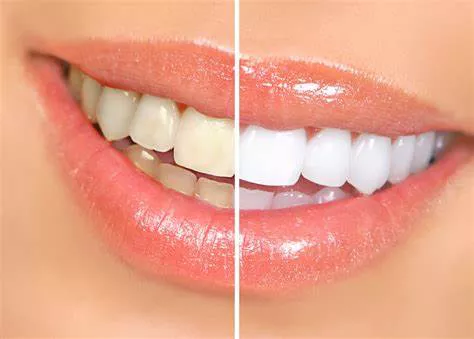How whitening strips work
It’s important to understand how whitening strips work. Whitening strips contain a bleach, usually hydrogen peroxide or ammonia peroxide, that is applied to the teeth and retained for a specified period of time. Bleach penetrates the enamel and breaks down stains, making teeth brighter and whiter.
Do I need to brush my teeth before using whitening strips?
Now, let’s consider whether we need to brush our teeth before using whitening strips. On the one hand, brushing your teeth before applying the strips can help remove surface stains or impurities that may interfere with the whitening agent’s effectiveness. In addition, brushing can help remove plaque or tartar that may interfere with the effectiveness of the whitening patch.
However, brushing your teeth before using whitening strips also has some potential drawbacks. Brushing too hard or using a stiff-bristled brush may cause damage to tooth enamel, making it more susceptible to sensitivity and damage from the bleach in whitening strips. In addition, brushing your teeth immediately before using whitening strips may cause your gums to become inflamed or swollen, which can also cause sensitivity and discomfort.
So what’s the best approach? As with many dental questions, the answer varies from person to person. If you have a lot of stains or impurities on the surface of your teeth, it may be beneficial to brush your teeth before applying whitening strips. However, if you have sensitive teeth or gums, or if you have a history of enamel erosion or damage, then it’s best to avoid brushing your teeth before using whitening strips.
If you choose to brush your teeth before applying whitening strips, it’s important to use a soft brush and gentle force. You should also avoid using scrub or whitening toothpastes, as these can cause further damage to the enamel. Instead, use a gentle, scrub free toothpaste and focus on brushing each tooth for two minutes.
See also: What is the Easiest Way to Whiten Teeth?
How to maximize the effect of whitening strips?
In addition to brushing your teeth, there are several things you can do to maximize the effectiveness of whitening strips. First, make sure to follow the instructions carefully, including recommended wear times and frequency of use. In addition, it is also very important to avoid foods and drinks that will stain during the use of whitening strips, such as coffee, tea and red wine.
Precautions and risks
If you experience sensitivity or discomfort while using the strips, discontinue use immediately and consult your dentist. Your dentist can help determine the cause of your sensitivity and recommend appropriate treatment options, such as anti-sensitivity toothpaste or fluoride treatment.
How to deal with the sensitivity or discomfort caused by whitening strips?
If you experience sensitivity or discomfort, you should stop using whitening strips and consult your dentist. A dentist can help determine the cause of the sensitivity and recommend appropriate treatment options, such as anti-sensitivity toothpaste or fluoride treatment. In addition, avoid eating or drinking foods and beverages that are too hot or too cold to reduce symptoms of sensitivity.
Conclusion
In summary, whether or not you need to brush your teeth before using whitening strips depends on several factors, including an individual’s oral health history and the amount of stains or impurities on the tooth surface. If you choose to brush your teeth before applying whitening strips, it’s important to use a soft brush and gentle force. In addition, carefully following instructions and avoiding foods and drinks that stain can help maximize the effectiveness of whitening strips. If you develop sensitivity or discomfort, be sure to consult your dentist for appropriate treatment options.
Relate topics:
Can the Dentist Get Stains Off Teeth?
How to Put On BURST Whitening Strips
































